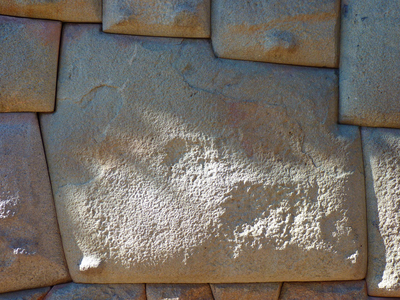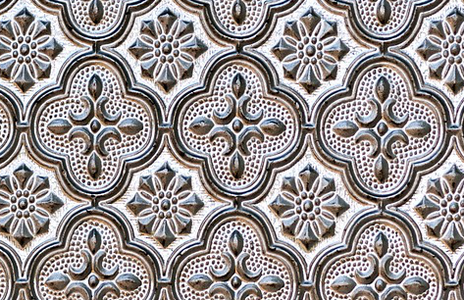Property 8 — Deep Interlock and Ambiguity
Deep Interlock and Ambiguity is introduced in
Interlock can be introduced when boundaries would be too isolating and lacking differentiation would muddle the centres into breaking with good shape. Where a transition between centres might be too ambiguous with a gradient, instead we can introduce an interlock of different unique elements.
The elements creating an interlock will share something in common. A porch or arcade[NoO1-01] is part of the outside world but also part of the building to which it is attached. A puzzle piece is connected to another by staking claim to that which is within the boundary of its neighbour but somehow also definitely its own. Other examples are more literal, such as the interlocking of joints in wood or foreground–background ambiguity.
 Interlocking wood beams. Neither is subordinate to the other.
Interlocking wood beams. Neither is subordinate to the other.
Interlock makes it difficult to determine which element was adjusted to make the connection work. When we cut stone so it fits together, depending on what we remove and from which stone, it can be difficult to determine which was fit to the other. Ambiguity creates a pleasant, tangled sensation, a knot rather than a mess. In examples of interlocking where we lack ambiguity, the knotting is less pleasing. It feels more like one element takes centre stage.
A deep interlock respects the positive space of the thing giving way. We can see a negative example of this in the interlock of Inca (probably not actually Inca, but it’s referenced as such, so I will call it that here) stonework. The central stone (it’s famous, and known as the twelve-angled stone) dominates the shape of the stones beneath it, but it is cut for the benefit of the smaller stones above. They did not create a positive space for the larger stone, so they are interlocked, but not as pleasant as they could have been had they worked together to create a harmonious shape.
 The cuts are not ambiguous. Lower stones always make way for the upper.
The cuts are not ambiguous. Lower stones always make way for the upper.
More harmonious interlock comes when there is a bi-directional commitment to the locking. The tiling lizards of M. C. Escher deeply interlock, so no lizard gives way to any other. They wholly interlock with each other. However, this interlock has little ambiguity.
Ambiguity is more like the kind where the background and foreground are uncertain, such as in an octagon and square tiling. The smaller squares could be the foreground or the background. However, this pattern is not strongly interlocking.
Many examples exist in the patterns of wallcoverings or textiles. Christopher Alexander’s collection of Turkish rugs, with their interlocking designs, had many excellent examples of this feature. You can spot deep interlock almost anywhere by staying alert for these overlapping centres.
 Interlocking shapes. Which is the foreground, which is the back?
Interlocking shapes. Which is the foreground, which is the back?
An ambiguous interlocking form is one where the interlock is deep but not driven by one or the other aspect. As an example, an anchoring pattern where the anchors reach into the space of the other but also define the opposite shape, which is also the same. The interlock is clear, but which is locking the other is ambiguous. The same can be said of a three-circle knot.
When elements stand too far apart from their environment, not literally but as contrast without connecting, an interlock can help introduce them and make them part of the world. The covered paving outside a mall is both the outside and the mall and helps create an introduction, planting it better in its space. We can also actively avoid ambiguity and create a moment of hesitation. Notice how most service entrances open directly to the work environment and evoke a distinct split. The shock of the split reinforces how the public should not enter this way.